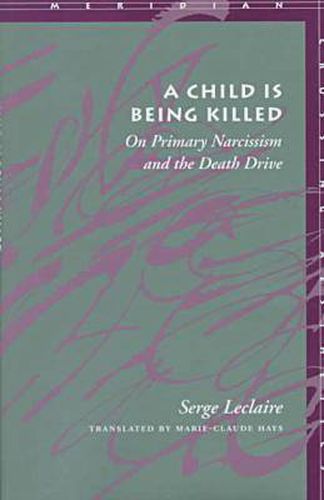Readings Newsletter
Become a Readings Member to make your shopping experience even easier.
Sign in or sign up for free!
You’re not far away from qualifying for FREE standard shipping within Australia
You’ve qualified for FREE standard shipping within Australia
The cart is loading…






The powerful thesis of this book is that in order to achieve full selfhood we must all repeatedly and endlessly kill the phantasmatic image of ourselves instilled in us by our parents. We must all combat what the author calls primary narcissism, a projection of the child our parents wanted. This idea that each of us carries as a burden an unconscious secret of our parents, a hidden desire that we are made to live out but that we must kill in order to be born touches on some of the fundamental issues of psychoanalytic theory. Around it, the author builds an intricate analysis of the relation between primary narcissism and the death drive. Each of the book s five chapters begins with one or more case studies drawn from the author s clinical experience as a psychoanalyst. In these studies he links his central concern the image of the child created by the unconscious desire of the parents to other issues, such as the question of love, the concept of the subject, and the death drive. In the penultimate chapter, on transference, the author challenges the commonplace understanding of the analyst s impassivity. What does such impassivity imply, especially in the context of a transferential love between a female patient and a male analyst? In replying to this question, the author forcefully reassesses the relation of psychoanalysis to femininity, to the question What does a woman want?
$9.00 standard shipping within Australia
FREE standard shipping within Australia for orders over $100.00
Express & International shipping calculated at checkout
The powerful thesis of this book is that in order to achieve full selfhood we must all repeatedly and endlessly kill the phantasmatic image of ourselves instilled in us by our parents. We must all combat what the author calls primary narcissism, a projection of the child our parents wanted. This idea that each of us carries as a burden an unconscious secret of our parents, a hidden desire that we are made to live out but that we must kill in order to be born touches on some of the fundamental issues of psychoanalytic theory. Around it, the author builds an intricate analysis of the relation between primary narcissism and the death drive. Each of the book s five chapters begins with one or more case studies drawn from the author s clinical experience as a psychoanalyst. In these studies he links his central concern the image of the child created by the unconscious desire of the parents to other issues, such as the question of love, the concept of the subject, and the death drive. In the penultimate chapter, on transference, the author challenges the commonplace understanding of the analyst s impassivity. What does such impassivity imply, especially in the context of a transferential love between a female patient and a male analyst? In replying to this question, the author forcefully reassesses the relation of psychoanalysis to femininity, to the question What does a woman want?